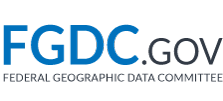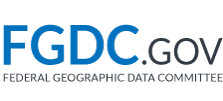Introduction | Parts | Schema | Training
Introduction
The Geographic Information Framework Data Standard establishes common requirements for data exchange for seven data themes of geospatial data that are of critical importance to the National Spatial Data Infrastructure (NSDI), as they are fundamental to many different Geographic Information Systems (GIS) applications. It specifies a minimal level of data content that data producers, consumers, and vendors are expected to use for the interchange of data for these themes, including through Web services.
The standard includes a base document and parts that correspond to following data themes: cadastre, imagery, elevation, geodetic control, government units and administrative and statistical boundaries, water - inland, and transportation. The transportation part consists of a base sub-part and sub-parts that correspond to different modes of transportation: airport facilities; rail; roads; transit; and waterways.
The draft standards were initially developed through the Geospatial One-Stop e-Government initiative; however, the FGDC assumed leadership for continued standards activities.
As the Geographic Information Framework Data Content Standard was developed using public funds, the U.S. Government is free to publish and distribute its contents to the public, as provided through the Freedom of Information Act (FOIA), Part 5 United States Code, Section 552, as amended by Public Law No. 104-231, “Electronic Freedom of Information Act Amendments of 1996”.
Parts
Schemas
Each part includes an integrated application schema expressed in Unified Modeling Language (UML) developed through the Object Management Group (OMG). The application schema specifies, as appropriate, the feature types, attribute types, attribute domain, feature relationships, spatial representation, data organization, and metadata that define the information content of a data set. XML Metadata Interchange (XMI) format files (XMI is another specification developed by OMG) are used to exchange of UML models between various among software packages.
While the Geographic Information Framework Data Standard does not specify a single structure for the interchange of data, an implementation using Geography Markup Language (GML) Version 3.1 developed through theOpen Geospatial Consortium, Inc. (OGC) has been created.
GML/XML for the parts of the Geographic Information Framework Data Standard may found at www.fgdc.gov/schemas/framework/.

